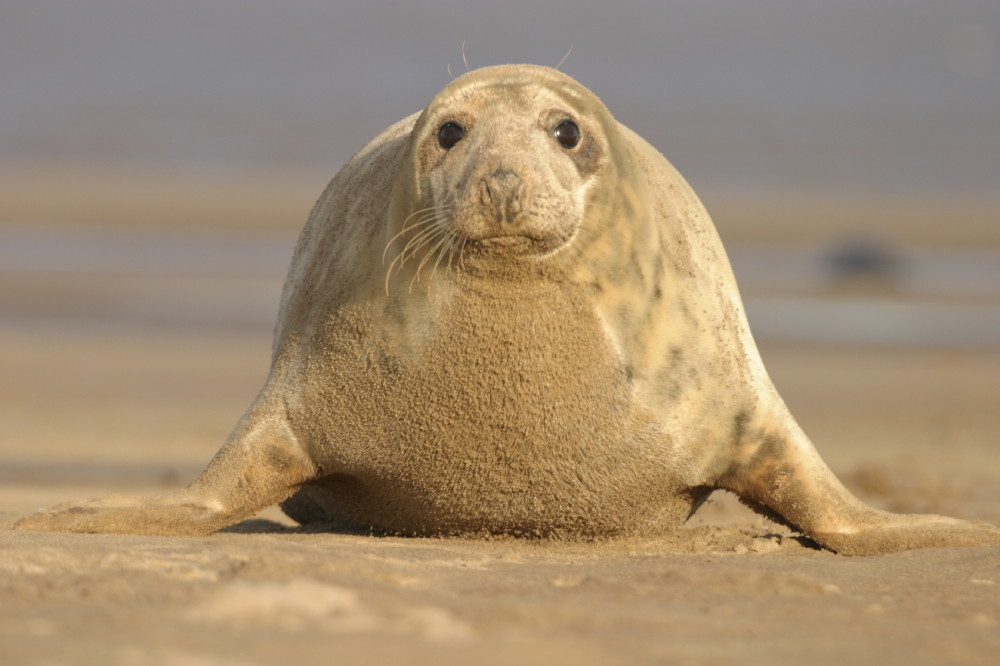Grey seal

Status
Native and locally common
Population
112,000
Scientific name
Halichoerus grypus
Globally, the grey seal is one of the rarest seal species and about 50% of the world population lives in British and Irish waters. They have a distinctive horse-like face with a long muzzle, large eyes and long whiskers. Their fur varies from light to dark speckled grey or even black. Seal pups however are born with creamy white fur and stay on land for two to three weeks until they moult. A thick layer of fat just beneath the skin insulates both pups and adults from the cold seawater. Males breed with several females: some will try to defend an area around a group of females, while others try to control access to beaches, gullies or pools of water. As a result, the number of females that a male mates with depends on the size of the breeding colony and physical features of the breeding site.
Head-body length: 1.4 – 2.5m (average 1.8m for females and 2.1m for males)
Weight: 130 – 440kg (average 155kg for females and 233kg for males)
Lifespan: Few females live more than 35 years and few males beyond 20 years
Reproduction
Grey seals usually come ashore to breed from late September until December. They prefer barren uninhabited islands and often go back to the same beach each year to breed. They give birth to a single pup of about 14kg, which the mother sniffs to learn its scent. Pups are suckled five or six times a day for 16 – 18 days, more than doubling and their weight by the time they are weaned and have moulted their white fur.
Diet
Mainly fish, especially sandeels; also cephalopods (such as squid) and occasionally birds.
Habitat
Grey seals feed around rocky coasts, sheltered coves, clear waters and sandy bays of offshore islands.
Predators
The grey seal has no natural predators in UK waters.
Threats
Pollution, especially chlorinated compounds such as PCBs, entanglement in discarded fishing nets, and disturbance by tourists.
Conservation status
Locally common. Increases seen in the 20th century are now levelling off. They are legally protected in the UK and under the EC Habitats Directive. In 1999, the uninhabited island of Linga Holm in the Orkney Islands was purchased by the Scottish Wildlife Trust as a sanctuary for grey seals.
UK population size & distribution
UK population 112,000. Grey seals are particularly abundant around the coasts of the Outer Hebrides and the Orkney Islands in Scotland. Small numbers are found off the coasts of Wales, Cornwall and Norfolk, and larger numbers off the Lincolnshire coast, Farne Islands, Isle of May and Shetland Islands.
Did you know?
Blind seals are typically found in good condition, suggesting that seals can forage with senses other than sight, such as their acute sense of smell and perhaps with their tactile whiskers, which may detect pressure waves.
